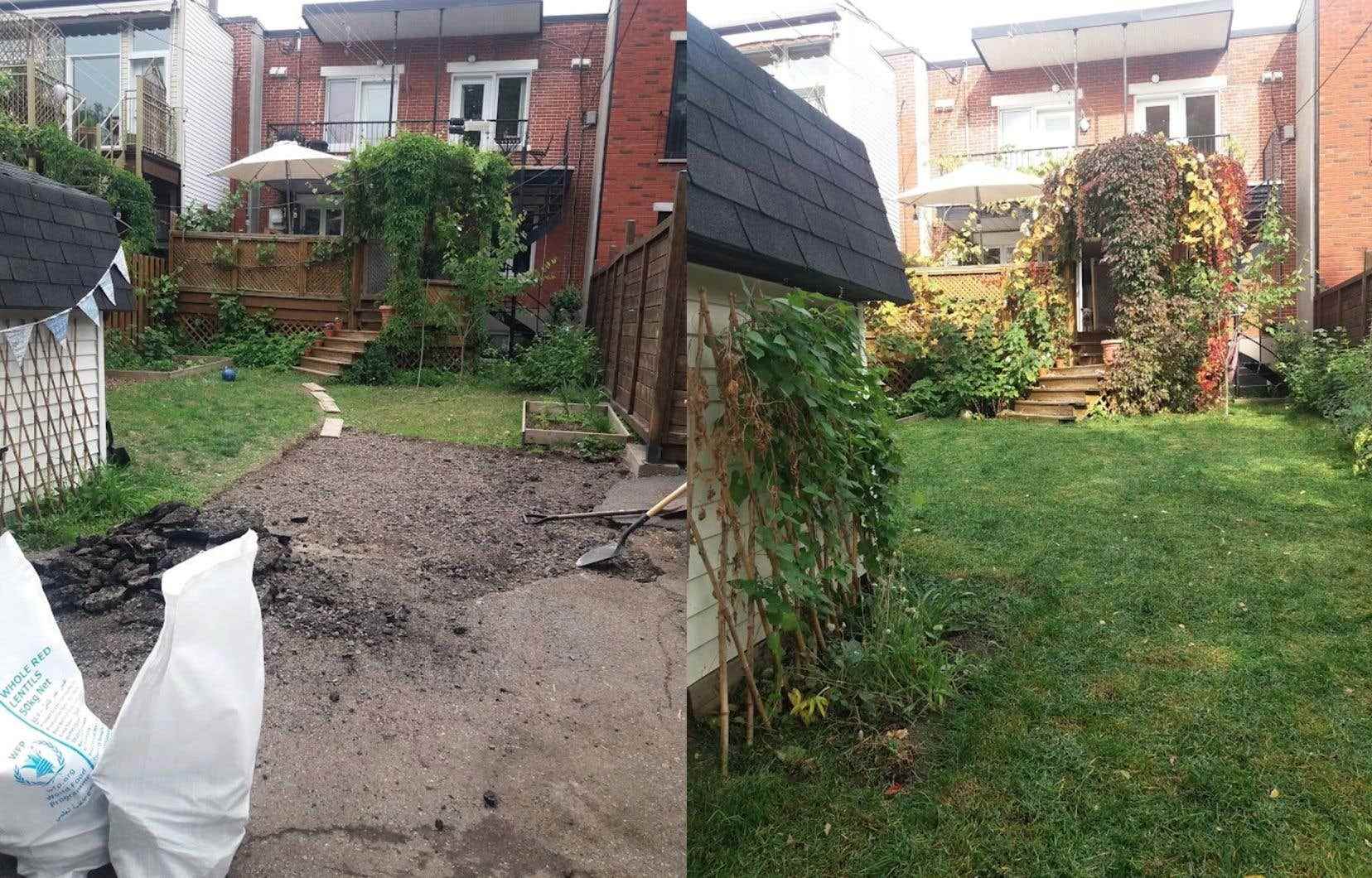This text is taken from the “Courrier de la planete” of May 17, 2022. To subscribe, click here.
Last year, the parking space at the back of Marion Le Bloa’s yard was conspicuous by its uselessness. She and her husband, who live in the Rosemont district of Montreal, had sold their car two years earlier. So they decided to replace this paved space with some greenery.
“We are a little thought crazy! says Ms. Le Bloa now. Because even in the densest neighborhoods of the metropolis where it is quite possible to live without a car, personal parking spaces remain in demand. And getting rid of it seems incongruous.
And yet: asphalt and concrete contribute to the formation of urban heat islands. When the sun beats down, there are several degrees of difference between the vegetable surfaces and those which are mineralized. Within a city, we can measure differences approaching 10°C between different neighborhoods that are more or less green.
The difference lies in the black color of the asphalt, which absorbs much more heat than light surfaces. It is also due to the superior capacity of mineral materials to store heat.
So when asphalt and concrete surfaces aren’t absolutely necessary, you might as well get rid of them. The benefits are felt on the spot, for the people who occupy the space, and on the scale of the neighborhood, which becomes a little cooler.
Call to action
Mrs. Le Bloa and the members of her family were surprised by the simplicity of the greening of their parking space overlooking the alley at the end of their courtyard. Very quickly, they realized that large slabs of asphalt almost tore themselves off. “We hired the children from the alley,” laughs the mother of two children aged 8 and 11.
They then hired – for real, this time – a worker who came, with a small tractor, to remove 60 cm of gravel. Soil and peat were then applied to the surface. Eventually, the family wants to plant trees to make this corner of their yard even greener.
The “complexification” of green spaces, with unmaintained grasses or shrubs, would also improve its air conditioning effect compared to grass, according to a Montreal study published in 2018. Obviously, these more complex spaces are also more welcoming ecosystems for local flora and fauna.
In general, demineralization also makes it possible to promote the absorption of rainwater by the ground. This water then “consumes” heat provided by the sun as it evaporates, which cools the atmosphere. It also waters the trees, whose evapotranspiration produces the same cooling effect.
To encourage citizens, businesses, organizations and municipalities to swap bitumen for cuttings, the Montreal Urban Ecology Center recently launched a new awareness campaign about demineralization. His website offers advice for those who want to try the experiment.
As for Ms. Le Bloa, whose “children live in the alley”, she believes that greening her entire yard will improve her family’s quality of life. “We will now see if other residents of the neighborhood will follow,” she said.
Even in optimistic climate scenarios, Montreal will have three times more days per year when the mercury will exceed 30°C from 2050, compared to the end of the 20th century.
